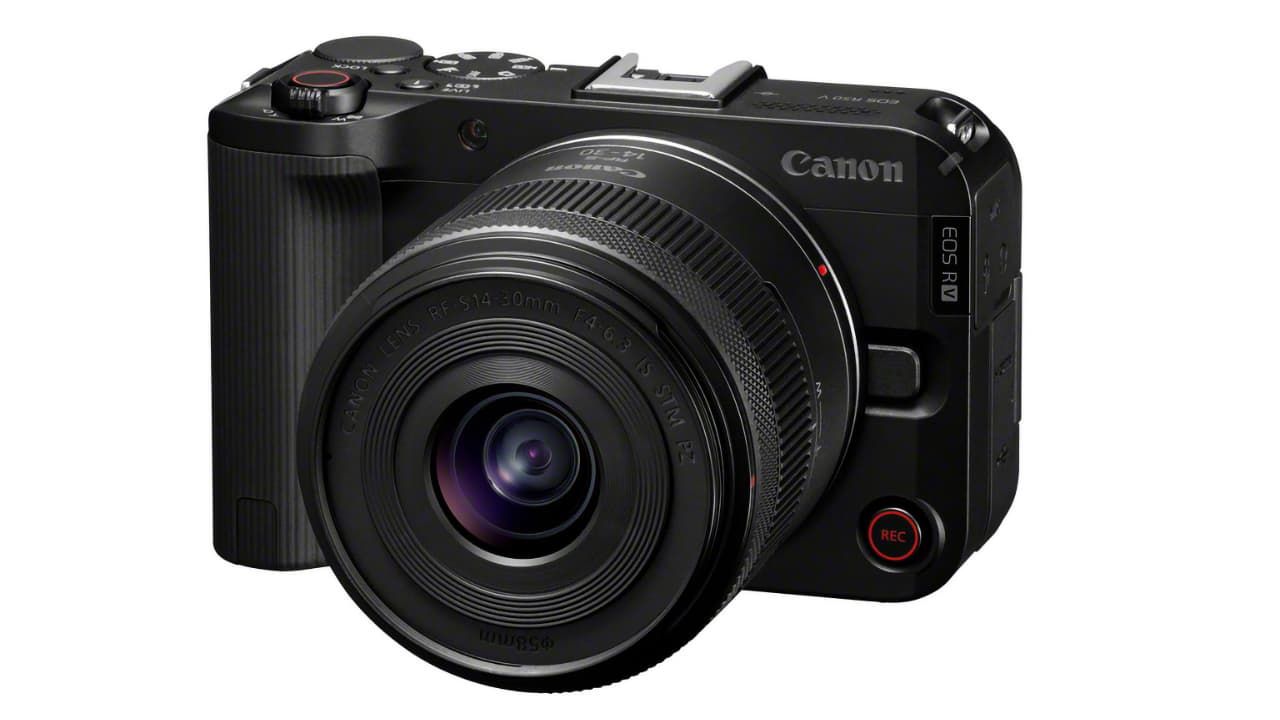
Canon’s targeting content creators today with the confirmation that the Powershot V1 is getting a global release, the video-first new EOS R50 V, and the RF-S 14-30mm F4-6.3 IS STM PZ lens.
While the announcement of the new EOS R50 V is the main course of today's smorgasbord of content creator and vlogger targeted new from Canon, it’s worth a quick detour into the global availability of the PowerShot V1. We quite liked the look of it for the vlogger market when it got a stealthy release for Japan, China, and key Asian markets in February, so follow that link for the full specs while these are the key features:
- 1.4-inch CMOS sensor
- Ultra-wide angle 16-50mm zoom lens
- 4K 60P recording
- 30fps stills performance (electronic shutter)
- Canon Log 3
- Built-In Cooling Fan
- Built-in ND Filter (3-stops)
- Dual Pixel CMOS AF II
At the time we thought it would roll out worldwide soon for around the $1000 mark, and so it has proved. The PowerShot V1 will be available from next month for $899, putting it right up against the Sony ZV-1 Mark II.
Canon EOS R50 V
The new EOS R50 V undercuts that by $250 coming in at a $649 body-only price and coupled with the new RF-S 14-30mm F4-6.3 IS STM PZ lens at $849 (more on that below). Both versions will be available next month.
The V in the name tells you this is an avowedly video-first release, so you do get a limited subset of the sort of tools you could expect to find on the way more expensive Cinema models such as Canon Log 3, custom colour profiles, 10-bit YCC 422 video, and intelligent autofocus, namely Dual Pixel CMOS AF II. You also get oversampled 4K video and four-channel audio.

It’s based around a 24MP APS-C sensor coupled with the DIGIC X image processor, and delivers 4K60p, 4K30p with 6K oversampling, and Full HD at 120 fps.
The control layout is designed so you can shoot both horizontal and vertical with equal comfort, and it has a vari-angle touchscreen for easy setting adjustments as well as a prominent front-facing record button and a dedicated live stream button. That gives you access to four different methods of livestreaming: UVC/UAC, HDMI, Camera Connect, and Live Switcher Mobile multi-camera.
It measures 119.3 by 73.7 by 45.2 millimeters (4.7 by 2.9 by 1.8 inches), and weighs 370 grams (13 oz) fully loaded.
It’s the first EOS R series unit to not have an EVF and it doesn’t have a built-in flash either. But for those invested in video shooting it will probably offer a better bet than the PowerShot V1 thanks to the larger sensor and ability to swap lenses. Talking of which…
RF-S 14-30mm F4-6.3 IS STM PZ

Lastly, it’s worth briefly talking about the RF-S 14-30mm F4-6.3 IS STM PZ lens which is closely paired with the EOS R50 V. It has an internal power zoom — in fact it is the first Canon RF lens with one, delivering controlled focal length transitions with two-step variable speeds and 15 adjustable levels — and also features advanced stabilisation for shake-free handheld footage. When combined with the EOS R50 V, the power zoom can be controlled using the camera’s zoom rocker – but it’s also compatible with all EOS R system cameras. It weighs just 181g (6.38 oz) and has a non-extending design to ensure consistent weight distribution.
Standalone price is going to be $329, a fair bump over the $200 bundle price with the EOS R50 V. It’s also not going to be available on its own until July.
Tags: Production Canon 360 cameras NAB 2025


Comments